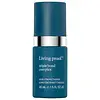Living Proof Triple Bond Complex Leave-in Hair Treatment Versus The INKEY List PCA Bond Repair Hair Treatment
What's inside
What's inside
 Key Ingredients
Key Ingredients

No key ingredients
 Benefits
Benefits

 Concerns
Concerns

 Ingredients Side-by-side
Ingredients Side-by-side

Water
Skin ConditioningCetyl Alcohol
EmollientGlyceryl Stearate
EmollientIsodecyl Oleate
EmollientIsopentyldiol
HumectantDioctyldodecyl Dodecanedioate
EmollientSodium Phytate
Phytosteryl/Octyldodecyl Lauroyl Glutamate
Skin ConditioningOlea Europaea Leaf Extract
PerfumingHelianthus Annuus Seed Wax
Skin ConditioningJojoba Esters
EmollientLinoleamidopropyl Dimethylamine Dimer Dilinoleate
Skin ConditioningC10-18 Triglycerides
EmollientRicinus Communis Seed Oil
MaskingGlyceryl Ricinoleate
EmollientCyclodextrin
AbsorbentPropanediol
SolventGlycerin
HumectantPentylene Glycol
Skin ConditioningCeteth-20
CleansingSteareth-20
CleansingPEG-75 Stearate
Polyglycerin-3
HumectantHydroxypropyl Methylcellulose
Emulsion StabilisingCyamopsis Tetragonoloba Gum
Emulsion StabilisingHydroxyethylcellulose
Emulsion StabilisingXanthan Gum
EmulsifyingCaesalpinia Spinosa Gum
Skin ConditioningParfum
MaskingCitric Acid
BufferingSodium Hydroxide
BufferingGluconic Acid
Hydroxyacetophenone
AntioxidantSodium Benzoate
MaskingLinalool
PerfumingHexyl Cinnamal
PerfumingCitronellol
PerfumingCitral
PerfumingLimonene
PerfumingWater, Cetyl Alcohol, Glyceryl Stearate, Isodecyl Oleate, Isopentyldiol, Dioctyldodecyl Dodecanedioate, Sodium Phytate, Phytosteryl/Octyldodecyl Lauroyl Glutamate, Olea Europaea Leaf Extract, Helianthus Annuus Seed Wax, Jojoba Esters, Linoleamidopropyl Dimethylamine Dimer Dilinoleate, C10-18 Triglycerides, Ricinus Communis Seed Oil, Glyceryl Ricinoleate, Cyclodextrin, Propanediol, Glycerin, Pentylene Glycol, Ceteth-20, Steareth-20, PEG-75 Stearate, Polyglycerin-3, Hydroxypropyl Methylcellulose, Cyamopsis Tetragonoloba Gum, Hydroxyethylcellulose, Xanthan Gum, Caesalpinia Spinosa Gum, Parfum, Citric Acid, Sodium Hydroxide, Gluconic Acid, Hydroxyacetophenone, Sodium Benzoate, Linalool, Hexyl Cinnamal, Citronellol, Citral, Limonene
Water
Skin ConditioningAmodimethicone
Butylene Glycol
HumectantBetaine
HumectantBis-PCA Dimethicone
Sorbitan Laurate
EmulsifyingCetrimonium Chloride
AntimicrobialPanthenol
Skin ConditioningTrideceth-12
EmulsifyingGlycerin
HumectantPEG-40 Hydrogenated Castor Oil
EmulsifyingSodium Benzoate
MaskingHydrolyzed Pea Protein Pg-Propyl Silanetriol
Skin ConditioningAminomethyl Propanol
BufferingAloe Barbadensis Leaf Juice Powder
Skin ConditioningDisodium PEG-12 Dimethicone Sulfosuccinate
CleansingPotassium Sorbate
PreservativeCitric Acid
BufferingPolyglyceryl-4 Laurate
EmulsifyingAlcohol
AntimicrobialHelianthus Annuus Seed Extract
Skin ConditioningDilauryl Citrate
EmollientPhenoxyethanol
PreservativeAvena Strigosa Seed Extract
Skin ConditioningLecithin
EmollientWater, Amodimethicone, Butylene Glycol, Betaine, Bis-PCA Dimethicone, Sorbitan Laurate, Cetrimonium Chloride, Panthenol, Trideceth-12, Glycerin, PEG-40 Hydrogenated Castor Oil, Sodium Benzoate, Hydrolyzed Pea Protein Pg-Propyl Silanetriol, Aminomethyl Propanol, Aloe Barbadensis Leaf Juice Powder, Disodium PEG-12 Dimethicone Sulfosuccinate, Potassium Sorbate, Citric Acid, Polyglyceryl-4 Laurate, Alcohol, Helianthus Annuus Seed Extract, Dilauryl Citrate, Phenoxyethanol, Avena Strigosa Seed Extract, Lecithin
Alternatives
Ingredients Explained
These ingredients are found in both products.
Ingredients higher up in an ingredient list are typically present in a larger amount.
Citric Acid is an alpha hydroxy acid (AHA) naturally found in citrus fruits like oranges, lemons, and limes.
Like other AHAs, citric acid can exfoliate skin by breaking down the bonds that hold dead skin cells together. This helps reveal smoother and brighter skin underneath.
However, this exfoliating effect only happens at high concentrations (20%) which can be hard to find in cosmetic products.
Due to this, citric acid is usually included in small amounts as a pH adjuster. This helps keep products slightly more acidic and compatible with skin's natural pH.
In skincare formulas, citric acid can:
While it can provide some skin benefits, research shows lactic acid and glycolic acid are generally more effective and less irritating exfoliants.
Most citric acid used in skincare today is made by fermenting sugars (usually from molasses). This synthetic version is identical to the natural citrus form but easier to stabilize and use in formulations.
Read more about some other popular AHA's here:
Learn more about Citric AcidGlycerin is already naturally found in your skin. It helps moisturize and protect your skin.
A study from 2016 found glycerin to be more effective as a humectant than AHAs and hyaluronic acid.
As a humectant, it helps the skin stay hydrated by pulling moisture to your skin. The low molecular weight of glycerin allows it to pull moisture into the deeper layers of your skin.
Hydrated skin improves your skin barrier; Your skin barrier helps protect against irritants and bacteria.
Glycerin has also been found to have antimicrobial and antiviral properties. Due to these properties, glycerin is often used in wound and burn treatments.
In cosmetics, glycerin is usually derived from plants such as soybean or palm. However, it can also be sourced from animals, such as tallow or animal fat.
This ingredient is organic, colorless, odorless, and non-toxic.
Glycerin is the name for this ingredient in American English. British English uses Glycerol/Glycerine.
Learn more about GlycerinSodium Benzoate is a preservative. It's used in both cosmetic and food products to inhibit the growth of mold and bacteria. It is typically produced synthetically.
Both the US FDA and EU Health Committee have approved the use of sodium benzoate. In the US, levels of 0.1% (of the total product) are allowed.
Sodium benzoate works as a preservative by inhibiting the growth of bacteria inside of cells. It prevents the cell from fermenting a type of sugar using an enzyme called phosphofructokinase.
It is the salt of benzoic acid. Foods containing sodium benzoate include soda, salad dressings, condiments, fruit juices, wines, and snack foods.
Studies for using ascorbic acid and sodium benzoate in cosmetics are lacking, especially in skincare routines with multiple steps.
We always recommend speaking with a professional, such as a dermatologist, if you have any concerns.
Learn more about Sodium BenzoateWater. It's the most common cosmetic ingredient of all. You'll usually see it at the top of ingredient lists, meaning that it makes up the largest part of the product.
So why is it so popular? Water most often acts as a solvent - this means that it helps dissolve other ingredients into the formulation.
You'll also recognize water as that liquid we all need to stay alive. If you see this, drink a glass of water. Stay hydrated!
Learn more about Water